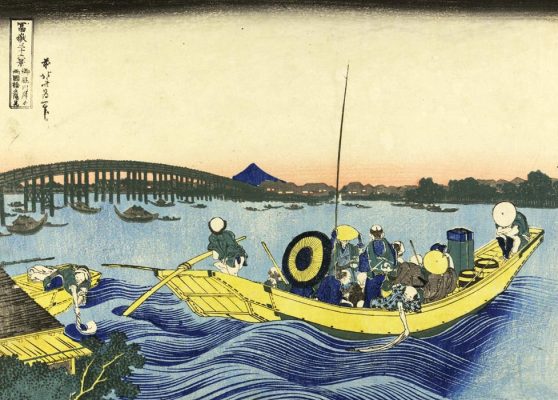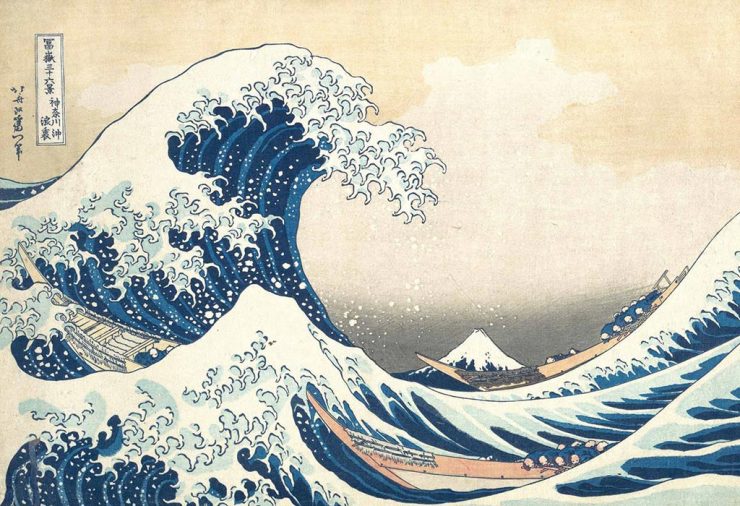20 February - 23 June 2024

Paintings, prints, drawings, and traditional objects describe the Eastern world from the 17th to the 19th century in the exhibition at Palazzo Braschi. There are 150 masterpieces of urban landscapes, natural places, fashion, customs, and habits by 30 Japanese artists. Among the exhibited artists, we find some of the most influential masters of the Rising Sun such as Katsushika Hokusai, Kitagawa Utamaro, Keisai Eisen, Hiroshige, Kuniyoshi, Toyokuni, Toyoharu and Kunisada.
The exhibition “UKIYOE. The Floating World. Visions from Japan” is a direct testimony of the Japanese world and its cultural refinement. Ukiyoe is a pictorial genre born in the Edo period (1603-1868) that includes scrolls both for hanging and for unrolling, but also large format screens, brush paintings on silk or paper. This genre also includes polychrome prints made with wooden matrices on paper.
Japanese writer Asai Ryōi explained the Ukiyo-e philosophy as follows: «to live moment by moment, to turn oneself entirely to the moon, the snow, the cherry blossoms and the red leaves of the maples, to sing songs, to drink sake, to comfort oneself forgetting reality, not to worry about the misery in front of us, not to be discouraged, to be like an empty gourd floating on the water current: this I call ukiyo».
Seven sections that cross multiple aspects, aesthetic, cultural, artistic, but also social, economic, and political of the long Edo period.
Ukiyo-e (a technique imported from China), literally means “pictures of the floating world,” is a genre of Japanese painting and woodblock printing from the Edo period (1603–1867). Ukiyo or “floating world” was an euphemism for narrating the beauties, prostitutes, and actors of this famous demimonde. However, in the last centuries, ukiyo-e has been strongly associated with landscapes. The most iconic example, “The Great Wave off Kanagawa” by ukiyo-e master Katsushika Hokusai (1760–1849), has become one of the most reproduced works of art in the world.

Ukiyo-e were influenced by the realism of the illustrated emaki scrolls of the Kamakura period (1192–1333), but they opened new horizons with their production method and accessibility. Ukiyo-e artists began to create portraits of ordinary people and urban celebrities rather than nobles, historical characters, or religious subjects.
They were even eager to represent erotic subjects in shunga prints, scandalizing the conservatives. This embrace of the everyday world represented a significant break with Japanese pictorial tradition, which had imitated Chinese genres.
The new ukiyo-e artists used woodblock printing, the meticulous process of carving layers of wood for printing, so that works could be easily reproduced and made accessible to the growing number of merchants in Edo. These two factors made ukiyo-e a revolutionary force in Japanese art and ensured the genre’s popularity with the public.
Alongside paintings and woodcuts, musical instruments, board games, an overkimono (uchikake), and fashionable male and female accessories are also on display, thus returning the reality of many applied art objects represented in ukiyoe and collected at the end of the nineteenth century by the first Italian artists and professionals residing in Japan.
Promoters: Rome Capital, Department of Culture, Capitoline Superintendence for Cultural Heritage. Curator, Rossella Menegazzo
Featured Photo. Katsushika Hokusai, View of the sunset near Ryogoku Bridge from the side of Honmaya wharf, from the series Thirty-six Views of Mount Fuji, 1830-1831. Polychrome woodcut, 26.3x38cm © Courtesy of Museum of Oriental Art E. Chiossone
Opening hours:
From Tuesday to Sunday 10:00 am – 7:00 pm; last entry one hour before closing. Closed on: Mondays, May 1st
Tickets are no longer available.
Your opinions and comments
Share your personal experience with the ArcheoRoma community, indicating on a 1 to 5 star rating, how much you recommend "UKIYOE. The Floating World. Visions from Japan"
Similar events